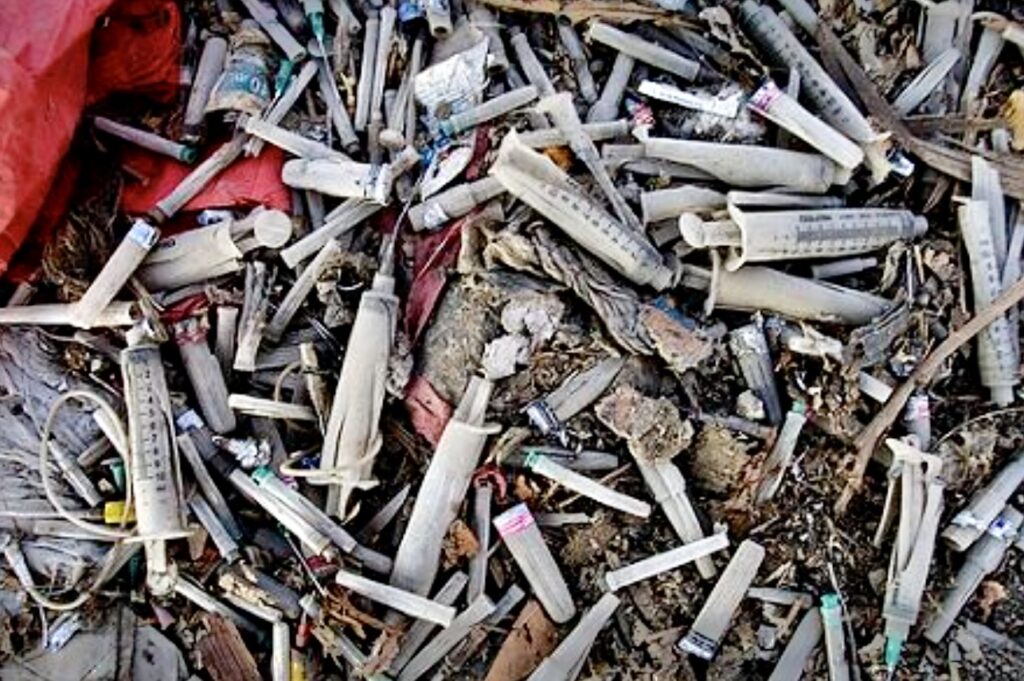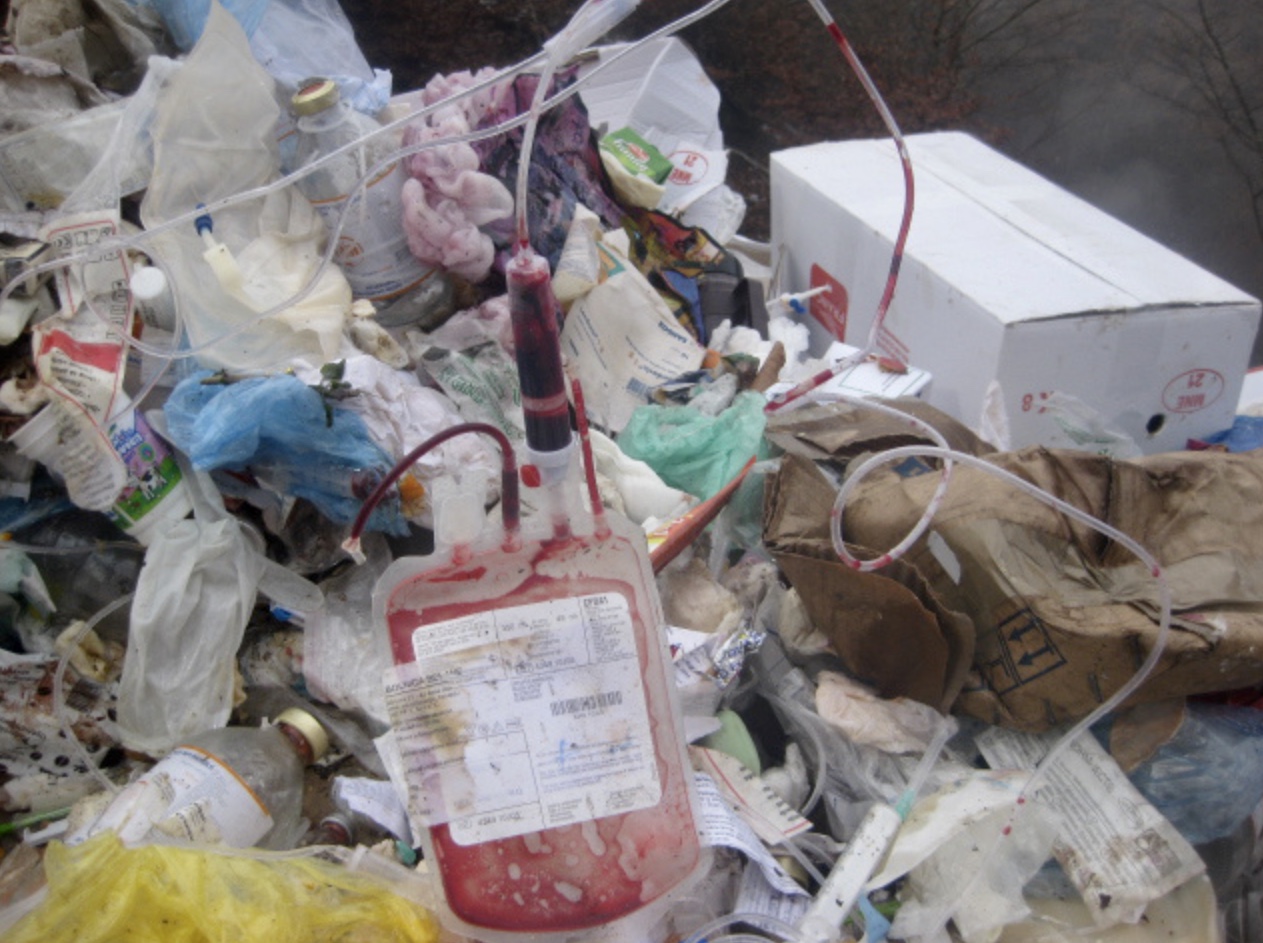Text by Henrylito D. Tacio
Photos: bioenergyconsult.com
Medical waste brought about by the coronavirus disease 2019 (COVID-19) is now estimated to be accumulating by 280 metric tons (MT) per day, according to the Department of Environment and Natural Resources (DENR).
Because of this, the DENR will be implementing a healthcare waste management project in light of the huge waste problem brought about by the pandemic, as this medical waste can cause detrimental effects to human health.
The environment department is cooperating with international agencies, including governments from developing countries Laos, Cambodia, Myanmar, and Nepal, said the press statement issued by DENR.
China’s South-South Cooperation Fund is allocating $1.076 million for the Philippines, announced Floradema C. Eleazar, United Nations Development Program team, during the launching of the project last August 13.
China International Development Cooperation Agency (CIDCA) is co-funding the project, which totals $5 million for five countries.
Eleazar said two waste treatment facilities would be put up in the Philippines.
One treatment facility will be put up in cooperation with the Pasig local government unit (LGU), where several hospitals (Pasig City General Hospital, Rizal Medical Center) are run by the government.
“The problem has reached a critical level. The city government does not have a capacity to deal with this infectious waste (that has been piling up) in the past few months. It is an urgent concern that seeks to be addressed,” said Pasig City Mayor Vico Sotto after knowing that the project will bring about expertise in medical waste management in the city.
“We look forward to the exchange of information, transfer of technology, technical support , and training of people. We look forward to the use of an autoclave shredder to process and treat up to 50 kilo per hour of waste,” he added.
The other facility will be built in Tala, Caloocan City.
Although hospitals make only a relatively small contribution to the waste mountain as a whole, their wastes pose more danger than any other form of garbage because of their infectious and toxic character.
Among the infectious wastes that are thrown away by hospitals include human parts, blood, and other body fluids and dressing contaminated with such substances, contaminated articles such as urine containers and stoma bags, and hypodermic syringes or sharps.
Infections may also stem from the improper disposal and use of contaminated items like needles which could transmit diseases such as hepatitis B, the human immunodeficiency virus (HIV), malaria, and syphilis. HIV is the microorganism that causes the dreaded Acquired Immune Deficiency Syndrome (AIDS).
Toxic wastes induce acute or chronic effects on human health. They may come from unused or expired drugs, chemicals used in clinical practice and in research laboratories, and radioactive wastes from radiology.
Health problems that may arise from hospital wastes come in two forms: acute exposure or chronic exposure. Acute exposure, sources said, means exposure up to 14 days, while chronic exposure is for much longer periods, including years.
According to medical scientists, the risk of infection depends on the survival of the germs present in the hospital waste.

To survive, pathogenic viruses need the same milieu as in human cells. “Neither waste nor soil provide this milieu, and microorganisms are broken down there within a few hours,” informed Dr. Winfried Schmidt, a German researcher who has been working on an environmentally- and hygienically-sound concept for the disposal of hospital waste.
But there’s a risk of infection if someone comes into direct contact with infectious microorganisms as a result of injury by puncture, cut, or abrasion. “Infection will follow if a large number of infectious germs find their way into the body, either through this injury or through the mouth,” Dr. Schmidt explained.
A survey conducted by the Presidential Task Force on Waste Management in the late-1990s found that over 90% of the 64 hospitals surveyed “dispose of their general wastes through the city or municipal refuse disposal system.” General wastes include packing materials and non-infectious rubbish.
In its report, the task force said that 56 hospitals disposed of their general waste through the city or municipal refuse disposal system, 11 burned their waste inside the hospital compound, and 4 buried their garbage within the hospital premises.
The report also noted that most of the surveyed hospitals treated their radioactive wastes before disposing of them. “Chemical wastes (non-hazardous and hazardous) are disposed of in sinks or water closets through hospital septic tanks, pit and sewer lines,” the report said.
But what alarmed the task force was the fact that most of the disposal sites of the hospital wastes “are all open dumps with the prevalence of scavenging.” It added that the majority of the hospital dispose of their infectious waste with the general wastes without disinfection.
“The work for sanitation is tied to health,” the report said. “If these facts fail to put across the message that health has been all but neglected here, I don’t know what will.”
The seriousness of the garbage problem caught the attention of then-president Fidel V. Ramos. In fact, he directed the Department of Health to ensure the hospitals’ strict compliance with waste disposal management standards. He also urged the local government units to deal with the problem in their respective areas.
Republic Act 6969, or “The Toxic Substances and Hazardous and Nuclear Wastes Control Act of 1990,” stresses the need to control and regulate the management of toxic wastes from all sources.
Administrative Order No. 29 of the DENR, the implementing rules and regulation of the law, covers hazardous hospital wastes since these categorize infectious waste as hazardous.
The law likewise outlines rules, responsibilities, and instructions for waste handlers and provides a system to keep track of hazardous waste.

